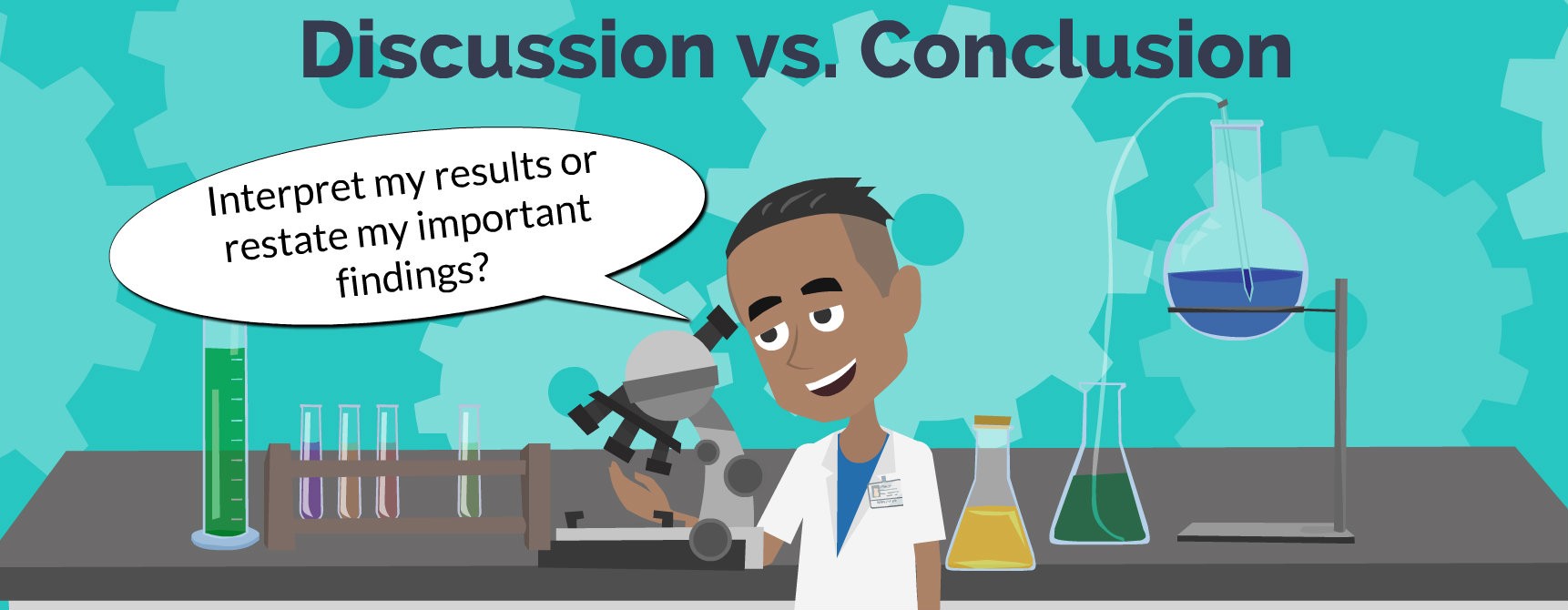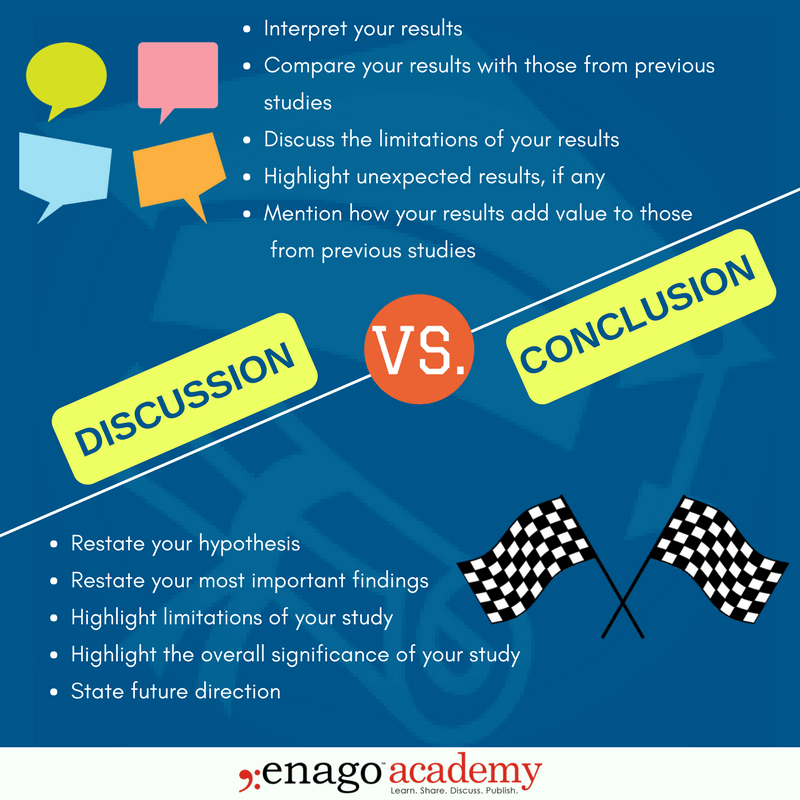
What Should be in Discussion Section?
Your discussion is, in short, the answer to the question “what do my results mean?” The discussion section of the manuscript should come after methods and results section and before the conclusion. It should relate back directly to the questions posed in your introduction, and contextualize your results within the literature you have covered in your literature review. In order to explain to your reader, you should include the following information:
- The major findings of your study
- The meaning of those findings
- How these findings relate to what others have done
- Limitations of your findings
- An explanation for any surprising, unexpected, or inconclusive results
- Suggestions for further research
Your discussion should NOT include any of the following information:
- New results or data not presented previously in the paper
- Unwarranted speculation
- Tangential issues
- Conclusions not supported by the data
How to Make Discussion Section Effective?
There are several ways to make the discussion section of your manuscript effective, interesting, and relevant. Most writing guides recommend listing the findings of your study in order from most to least important. You would not want your reader to lose sight of the key results that you found. Therefore, put the most important finding front and center.
Imagine that you conduct a study aimed at evaluating the effectiveness of stent placement in patients with partially blocked arteries. You find that despite this being a common first-line treatment, stents are not effective for patients with partially blocked arteries. The study also discovers that patients treated with a stent tend to develop asthma at slightly higher rates than those who receive no such treatment.
Which sentence would you choose to begin your discussion?
Our findings suggest that patients who had partially blocked arteries and were treated with a stent as the first line of intervention had no better outcomes than patients who were not given any surgical treatments.
Our findings noted that patients who received stents demonstrated slightly higher rates of asthma than those who did not. In addition, the placement of a stent did not impact their rates of cardiac events in a statistically significant way.
If you chose the first example, you are correct. If you aren’t sure which results are the most important, go back to your research question and start from there. The most important result is the one that answers your research question.
It is also necessary to contextualize the meaning of your findings for the reader. What does previous literature say, and do your results agree? Do your results elaborate on previous findings, or differ significantly?
In our stent example, if previous literature found that stents were an effective line of treatment for patients with partially blocked arteries, you should explore why your results are different in the discussion. Did your methodology differ? Was your study broader in scope and larger in scale than the previous studies? Were there any limitations to previous studies that your study overcame? Alternatively, is it possible that your own study could be incorrect due to some difficulties you had in carrying it out? Think of your discussion as telling the story of your research.
Finally, remember that your discussion is not the time to introduce any new data, or speculate wildly as to the possible future implications of your study. However, considering alternative explanations for your results is encouraged.

Avoiding Confusion in your Conclusion!
Many writers confuse the information they should include in their discussion with the information they should place in their conclusion. One easy way to avoid this confusion is to think of your conclusion as a summary of everything that you have said thus far. In the conclusion section, you remind the reader exactly what they have just read. Your conclusion should:
- Restate your hypothesis or research question
- Restate your major findings
- Tell the reader what contribution your study has made to the literature
- Highlight any limitations of your study
- State future directions for research/recommendations
Your conclusion should NOT:
- Introduce new arguments
- Introduce new data
- Fail to include your research question
- Fail to state your major results
An appropriate conclusion to our hypothetical stent study might read as follows:
In this study, we examined the effectiveness of stent placement in patients with partially blocked arteries compared with non-surgical interventions. After examining the five-year medical outcomes of 19,457 patients in the greater Dallas area, our statistical analysis concluded that the placement of a stent resulted in outcomes that were no better than non-surgical interventions such as diet and exercise. Although previous findings indicated that stent placement improved patient outcomes, our study followed a greater number of patients than the major studies previously conducted. It is possible that outcomes would vary if measured over a ten or fifteen year period, and future researchers should consider investigating the impact of stent placement in these patients over a longer period of time than five years. Regardless, our results point to the need for medical practitioners to reconsider the placement of a stent as the first line of treatment as non-surgical interventions may have equally positive outcomes for patients.
